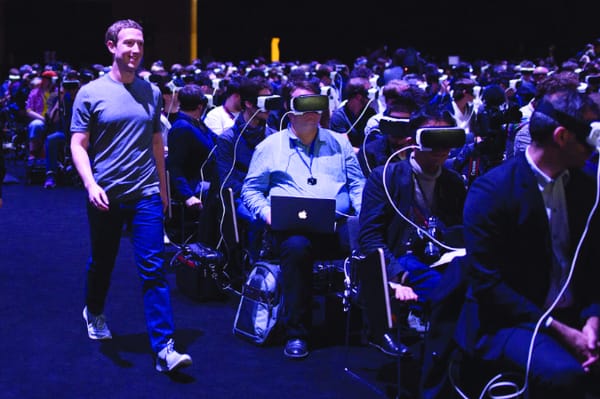Felix Film’s Summer 2017 cinema round-up
How we fell out of love with the Hollywood blockbuster.

Depending on who you are, the summer movie season was either a blessing or a disaster. For film studio executives, it was unquestionably dismal. There was little comfort in watching each new release miss its box office targets. On Labour Day Weekend – the long summer weekend in the United States where film studios often expect major ticket sales – the U.S. box office had its worst performance in 17 years: the top twelve films grossed a combined $51.5 million and you have to go back to 2000, when the top twelve grossed $47 million, to find a worse performance. No doubt some film studio executives have already began questioning their tentative summer 2018 releases, wondering whether some of those big budget productions might need a few re-writes, lest they suffer the same fate as some of this year’s box office flops.
On the other side of the aisle however, film critics and casual moviegoers were spoilt for choice by the variety of films on offer. Wonder Woman, Spider-Man: Homecoming and Guardians of Galaxy Vol. 2 rounded out the annual instalment of superhero flicks, while lower budget productions like Get Out, Atomic Blonde, and Girls Trip offered audiences something other than the avalanche of family-friendly crowd-pleasers that have traditionally dominated the summer movie season.
In summers past, almost all high budget productions – those with budgets exceeding $100 million – were usually viewed as guaranteed successes by major film studios. Instead of acquiring an army of screenwriters and producers that could marshal a film towards Academy Award glory, studios focused their financial firepower on developing special effects bonanzas that would capture the attention of audiences worldwide; because as lovely as an Oscar nomination may be, it matters little if you don’t have enough money to run your film studio in the first place.
“Studios focused their financial firepower on developing special effects bonanzas ”
Consequently, major film studios like Universal, Warner Bros., and 20th Century Fox, all developed appetites for producing high-budget blockbusters. Just consider the case of the Transformers franchise: the first four films were all box office hits; released over the 7-year period from 2007 to 2014, each film managed to gross over $700 million worldwide, and the third and fourth instalments in particular succeeded in cracking the $1 billion mark. By the end of 2014, all four films occupied top-ten slots in Paramount Pictures’ list of its highest-grossing films worldwide. Given such runaway success, the executives at Paramount were in no rush to drop the Transformers franchise any time soon.
Fast-forward to 2017 and we have our fifth instalment in the series, Transformers: The Last Knight. Despite being armed with a budget of $217 million and marketing spending likely exceeding $100 million, the film has “only” managed to gross $605.4 million in the four months since its release. To understand why this is bad, you first have to understand the difference between ticket sales in the North American market (where all major Hollywood film studios are headquartered) and ticket sales in foreign markets.
When a movie ticket for a wide release film is sold – say for around $10 – that revenue is split between several entities. If sold in the North American market, around $4 may go to the theatre showcasing the film and the remaining $6 to the film studio that produced it, but if sold in a foreign market, the film studio may only get $2, since the studio will typically have to rely on several intermediaries to distribute its films in international markets. So, when the latest Transformers instalment grosses $130.2 million in North America and $475.2 million internationally, compared to its predecessor’s $245.4 million North American and $858.6 million international gross, then the film is rightly viewed as a box office disappointment. And the underperformance of Transformers: The Last Knight is not an isolated incident, it mirrors a general trend over the summer 2017 movie season.
Pirates of the Caribbean: Dead Men Tell No Tales suffered the lowest North American gross and the second-lowest worldwide gross out of any film in the series, pulling in $794 million worldwide against a $230 million budget, with roughly 78% of that revenue coming from foreign markets – the highest such percentage in the series 14-year history.
Universal’s reboot of The Mummy didn’t fare much better: the film grossed $80.1 million in North America and $329 million in other territories for a worldwide total of $409.1 million, against a combined production and advertising budget of around $345 million. And of course, due to the thinner profits from foreign markets, Universal will likely lose in excess of $75 million from their investment in this film.

It doesn’t end there: the co-produced Warner Bros. and Legendary Pictures epic, Kong: Skull Island, grossed $168 million in North America and $398.6 million in foreign markets for a worldwide total of $566.6 million. Made on a production budget of $185 million and fuelled by a $136 million marketing campaign, this franchise reboot needed to make at least $450-500 million worldwide for Warner Bros. and Legendary Pictures to break even.
What does this string of box office failures tell us? Well, for starters, audiences around the world may be suffering from blockbuster fatigue. The summer of 2017 has been something of a graveyard for sequels, reboots and franchises, and film studios will have to reconsider how they approach audiences, both domestic and foreign, if they wish to revive the spectacle of the summer movie season. Studio executives could probably learn a few lessons by paying attention to some of the lower budget films that managed to exceed box office expectations this summer.
Without a doubt, the most successful low-budget production of the year will be Jordan Peele’s Get Out. The film, which finds horror in casual racism, has attracted unanimous praise ever since its mid-March release. Critics have lavished it with rave reviews and some have even penned it for a Best Picture nomination as Hollywood gears up for Oscar season. And that’s not all: against a $4.5 million budget, the film has pulled in a whopping $253.1 million worldwide, meaning that it will probably be the most profitable film of the year.
“Audiences around the world may be suffering blockbuster fatigue”
So, how exactly did this film – a directorial debut for Peele and starring a semi-notable cast – wind up as one of the bona fide hits of 2017?
For that, we have to turn to its two-pronged marketing campaign. On the one hand, Universal Studios’ advertising placements focused on the film’s unique thematic elements – a culturally relevant racial commentary mounted against a backdrop of satirical horror. On the other hand, stellar reviews, roughly 200 pre-release screenings and over 6 million trailer views on YouTube, all worked in tandem to cultivate favourable word-of-mouth and propel the film to a $33.4 million opening weekend. The film’s buzz continued well after release and on its second weekend, its ticket sales had dropped only 15.4% relative to its opening weekend – significant, because horror films generally post second-weekend drops of at least 60%.
Get Out ’s success is even more surprising because it was released in February – one of the so-called “dump months” where audiences are smaller and theatres in North America typically expect much fewer ticket sales. To simply say that Get Out “defies expectations” is a lazy statement, because the film does so much more than that. It is a film that has attracted tons of ticket sales and critical praise, while seemingly defying every Hollywood rule about how movies attract tons of ticket sales and critical praise. Get Out ’s unique pattern of success was mirrored throughout the summer by other low-budget releases such as Atomic Blonde, Girls Trip and Baby Driver – films that didn’t have a war chest to spend on advertising, but still managed to draw large audiences into theatres by relying on strong reviews and social media buzz.
Atomic Blonde, the neon-lit 80s spy thriller directed by David Leitch (John Wick), garnered favourable reviews and pulled in a respectable $95.7 million worldwide against a budget of $30 million, even while opening only one week after Christopher Nolan’s war epic, Dunkirk. Girls Trip, another sleeper hit, became the first comedy in 2017 to gross over $100 million in the North American market, and so far has topped out at $136.3 million worldwide. It’s worth noting that while Girls Trip has made over 84% of its revenue domestically (in the North American market), other sleeper hits like Baby Driver ($226.3 million worldwide gross; $34 million budget) and Split ($278 million worldwide gross; $9 million budget) have been able to generate almost equal amounts of domestic and foreign revenue.
Girls Trip ’s concentrated popularity in the U.S. is not unusual, since its storyline seems heavily geared towards that market; a phenomenon also mirrored by the success of Dunkirk in the U.K. While Dunkirk has managed to pull in $522.9 million worldwide, $73.7 million of that has come from the combined U.K. and Ireland market – this is notable, given that the combined U.K. and Ireland market generally contributes less than 10% to the worldwide revenues of most Hollywood blockbusters. Dunkirk ’s popularity in the U.K. has made it the second-highest grossing film at the 2017 U.K. box office, missing out on first place to Disney’s Beauty and the Beast, which is currently the highest-grossing film of the year at the global box office.
The success of low-budget films like Get Out and Atomic Blonde, as well as market-specific targets like Girls Trip and Dunkirk, lends credence to the claim that the average moviegoer is beginning to care more about novel and unique cinematic experiences, opposed to the latest Marvel superhero instalment, Paramount Pictures sequel, or Warner Bros. remake.
I could say more about the creeping threat of streaming platforms, the curious success of animated movies, or the money-making machine that is Marvel Studios, but in doing so, I would probably stretch this article by a couple thousand words – a bit excessive given that we’re already in 2-page territory here. Nonetheless, these topics are indeed important and they provide some unique insights into where the film and TV industries are headed over the next few years. I will be exploring them in future editions of Felix, so stay tuned to read about it. As for now, it seems safe to say that with the 2017 summer movie season, we witnessed a juxtaposition of fortunes. Audiences were treated to both high-budget blockbusters and low-budget novelties, and will undoubtedly be hoping for similarly varied offerings next year; film studios on the other hand, will likely be revisiting their assumptions about what kinds of movies make money. The ground is shifting beneath their feet and a fog is obscuring their vision, so they will need to find their bearings quickly or risk extinction at the hands of a future box office blunder.








